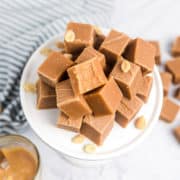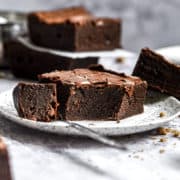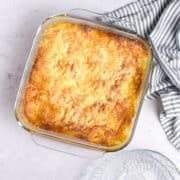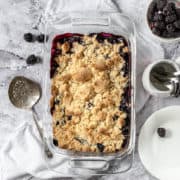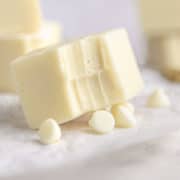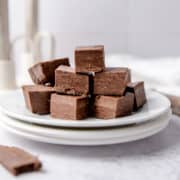Turnips used to be considered a staple but these days they're no longer one of the most commonly eaten vegetables.
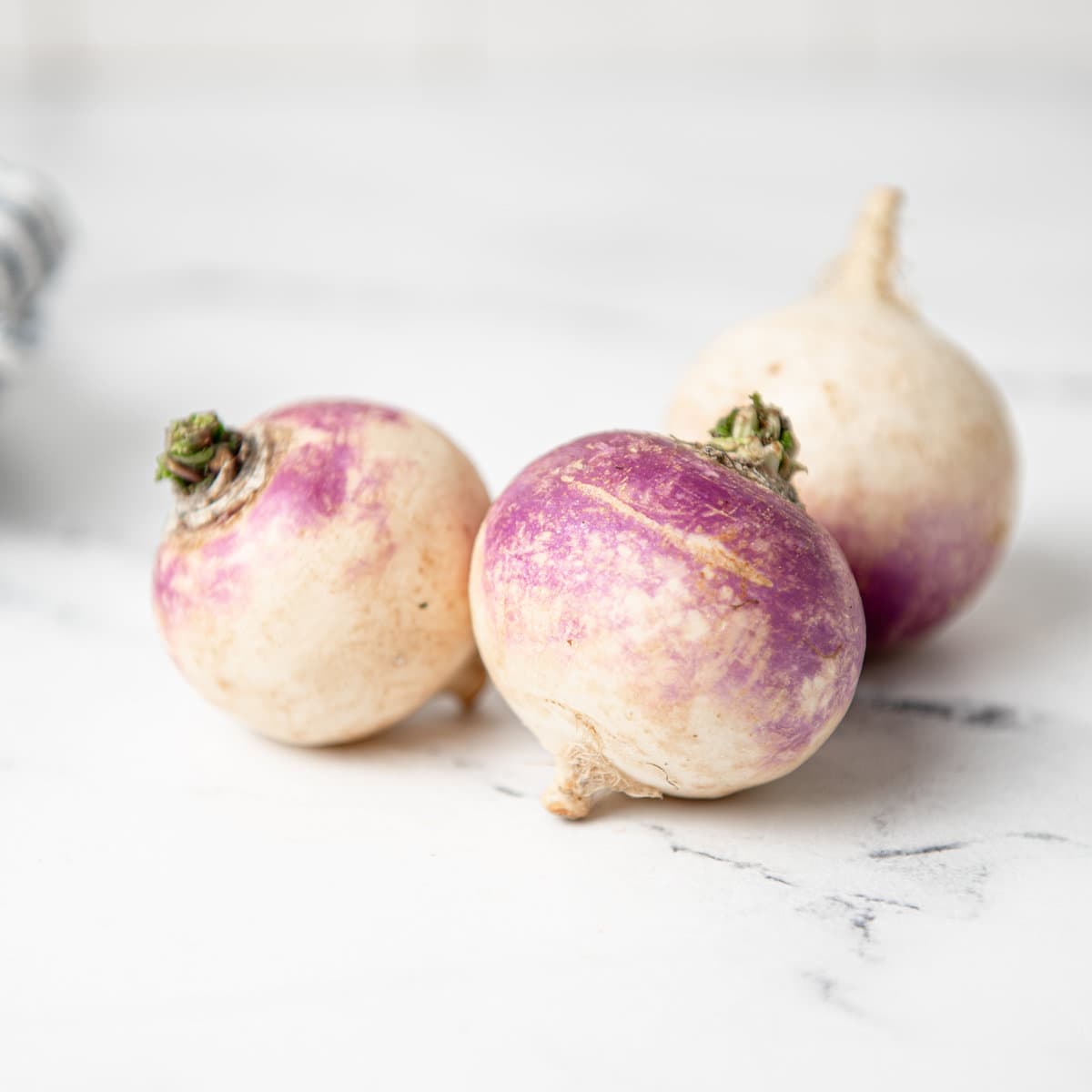
Jump to:
These starchy root vegetables prefer to grow in places that have cold winters. Those harvested after a hard frost or several hard freezes have an even better, sweeter flavor. If you enjoy the flavor of turnips or you want to add them to your diet, it's a good idea to learn more about how to store turnips so you can ensure yours stays fresh.
These hardy veggies can be prepared in different ways, such as mashed, roasted, or boiled. The leafy greens can also be eaten.
I like to switch up side dishes in the colder months, sometimes mashing turnips with sweet potatoes as an alternative to regular mashed potatoes, or roasting them with carrots, pumpkin, and rutabaga to enjoy alongside meat.
Baby turnips are really mild and I like to munch on them raw, like radishes, if I'm using the rest in a salad or some kind of crunchy appetizer recipe. Radishes are smaller of course but both these veggies still have a bit of "bite" in the taste.
Since these root crops are so hardy, they used to be a popular vegetable among the poor, with aristocrats refusing to eat them. But then the same can be said about lobsters and oysters and look how elevated they are these days!
Regardless of the origins of this humble vegetable, turnips definitely deserve their place on fall and winter menus and they're delicious and filling as well as economical.
What are Turnips?
White turnips (Brassica Rapa) are a type of root vegetable. They're related to mustard greens, collard greens, and radishes, and not to potatoes. Their fleshy, white taproot is the edible part of the plant. In parts of Canada and the UK, the word turnip refers to rutabaga, which is a larger root vegetable in the same family.
A typical turnip will have white skin except for the red, purple, or green top where the sun has got to it, and the green leaves that grow upwards.
Inside the vegetable, the flesh is completely white. The bulb of the turnip can be between 2 and 8 inches in diameter and there is a taproot underneath which is thin and about 4 inches long. You won't always see the taproot though, since sometimes it's taken off before the fresh turnips are sold.
You can also get very small ones, known as baby turnips, with red, orange, or yellow flesh, along with their white-fleshed cousins. These are mild enough to be enjoyed raw in salads in place of radishes.
Wild turnips, along with radishes, mustard plants, and other root vegetables in this family, have been around for at least 4,000 years and grow all over Europe and western Asia. It's believed that the edible turnips we know today were first grown in northern Europe before spreading to China and Japan around 700 AD.
If you want to try growing your own, it's best if you live somewhere with cool temperatures, such as the fall or spring in the northern United States or Canada. These garden vegetables don't like dry, hot weather.
Turnips are nutritious and the bulbs provide fiber, Vitamin C, phosphorus, calcium, and folate. Turnip leaves are even more nutritious, offering a good amount of Vitamins A, C, and K, folate, calcium, and fiber.
How to Choose Turnips
Reject any of these root veggies that have discoloration or bruising, along with any that seem squishy or mushy. The best thing to do is check the turnips are heavy and firm, with clear, unblemished skins.
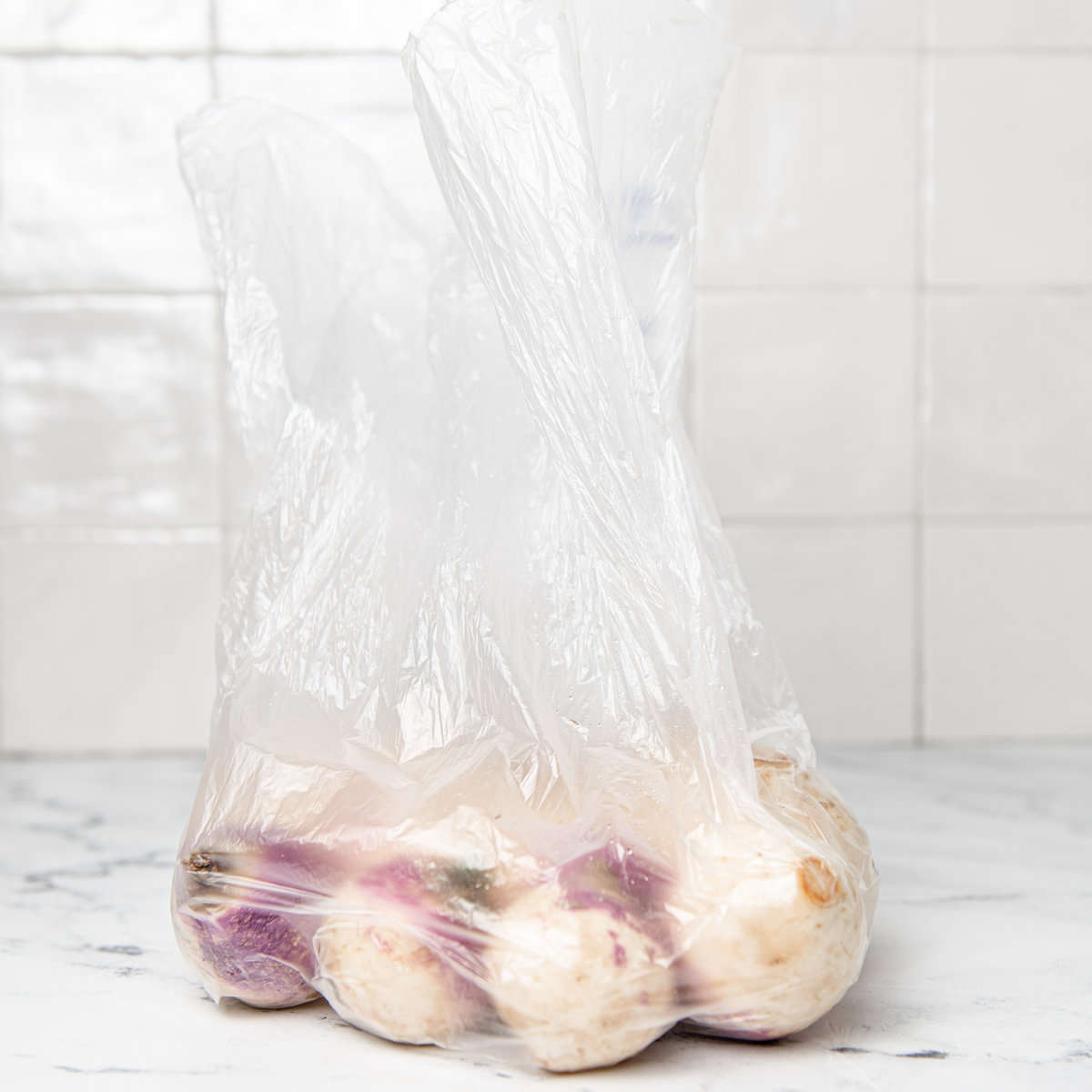
How to Store Turnips
There's nothing difficult about turnip storage, as long as you know this root vegetable's preferred conditions.
The following storage tips should prove helpful if you want to know how to store turnips to prolong their life:
- Keep them in a dark, cool place like a root cellar or, if you don't have one, in the pantry. They don't mind room temperature if you'll be using them within a couple of days but otherwise prefer a dark place and cold storage.
- Turnips prefer good air circulation especially if you only have a humid place to keep them.
- For longer storage, it's best to keep them in the refrigerator, where they should be fine for 2-3 weeks.
- An excellent way to keep them fresh is in a perforated plastic bag or loosely wrapped in a paper towel to soak up excess moisture (moisture leads to premature rotting).
- Another option, to extend their shelf life even more, is to freeze them in an airtight container.
- They will thaw out a little softer but be fine for soups and stews.
- The best way to prepare them for freezing is to wash, dry, and peel the turnips, and then chop them into 1 or 2-inch cubes. You can then flash freeze the pieces in a single layer on a baking sheet, then transfer them into airtight containers or freezer bags for up to 6 months.
Don't forget about the turnip greens! Remove them from the turnips before storing the bulbs, since leaving them on makes the turnips spoil quicker.
You can rinse the leaves with cold water to remove pesticides and dirt, then soak them in saltwater for a few minutes. Rinse them again, and then store turnip greens in a plastic bag in the crisper drawer for up to 5 days, or wrapped in damp paper towels and then in plastic bags for up to 2 weeks.
How to Tell if Turnips Are Spoiled
A rotten turnip might have a mushy or soft texture inside, or a sour, rotten taste. The outside of a spoiled turnip might have discolored patches or even mold. My advice is if it smells or looks bad, throw it out!
Common Questions
Turnip leaves, which are often known as turnip greens or turnip tops, taste like mustard greens. They're used during very late summer, fall, and winter in some Southern states. If you love mustard greens, you're sure to love these as well.
The smaller edible greens are less bitter but if you only have bigger ones, pour off the boiling water when they're half done and replace it with new water. This helps eliminate any bitter taste. In the South, a common way to prepare turnip greens is to boil them with ham or bacon. The greens are eaten and the resulting broth can also be used.
Although turnips are often viewed as "humble" food, they're really great for making sides. I like to toss 6 chopped turnips with 2 chopped firm pears with a splash of oil and some salt (no need to peel anything first). Roast on a baking sheet at 475°F for half an hour, stirring once.
Melt a couple of tablespoons of butter in a pan with a couple of tablespoons of honey and a tablespoon of chopped fresh rosemary and simmer for 3 minutes, then toss the cooked turnips and pears with the honey mixture and serve hot. This will serve 6 and is amazing with anything from steaks to lamb, chicken, or even fish!
Turnips are sometimes used as a lower-carb alternative to potatoes. You can boil, fry, bake, mash, or roast both, and turnips taste pretty good too! If you're not sure, why not try making a mash with half turnips and half potatoes or half turnips and half rutabaga, for example, so you can get used to the taste?
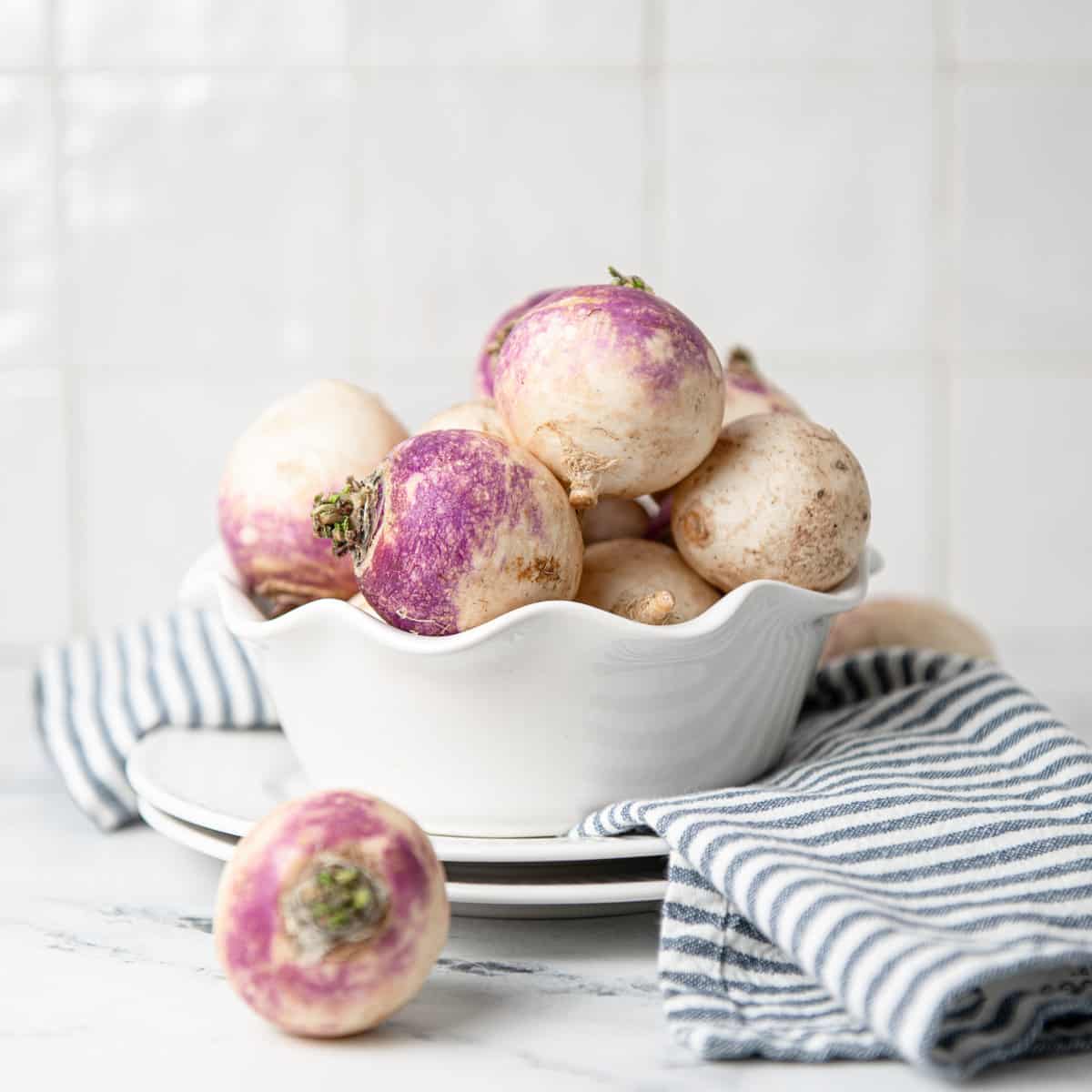
Interesting Facts
- Before pumpkins became the Halloween root vegetable of choice in Ireland, large turnips were used to make Jack-O-Lanterns instead.
- Larger turnip roots (sometimes weighing over 2 pounds) are sometimes used as livestock feed as they're not as tender as the small ones we prefer.
- Pickled turnips are a popular snack or side dish in some Middle Eastern countries.





